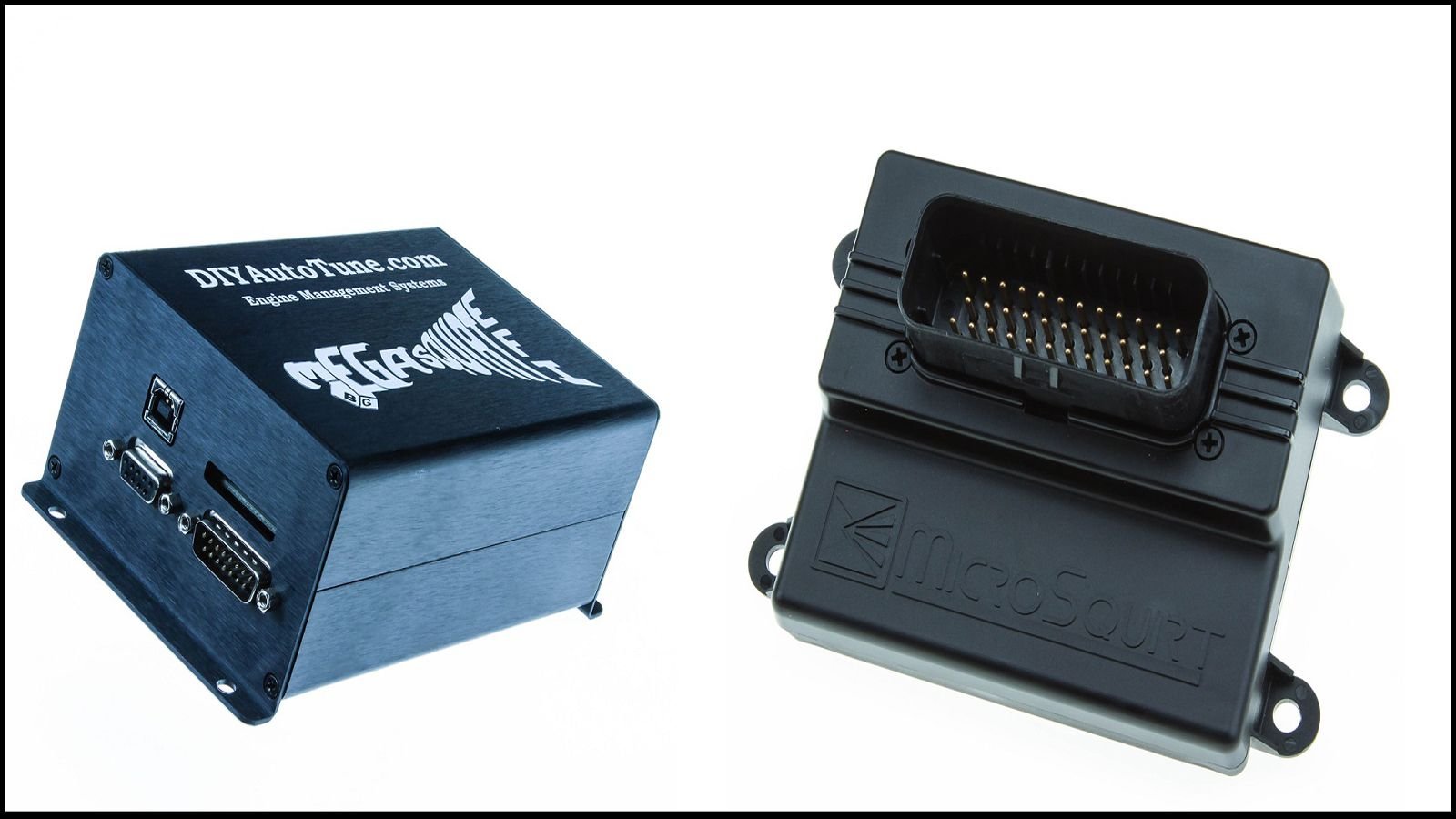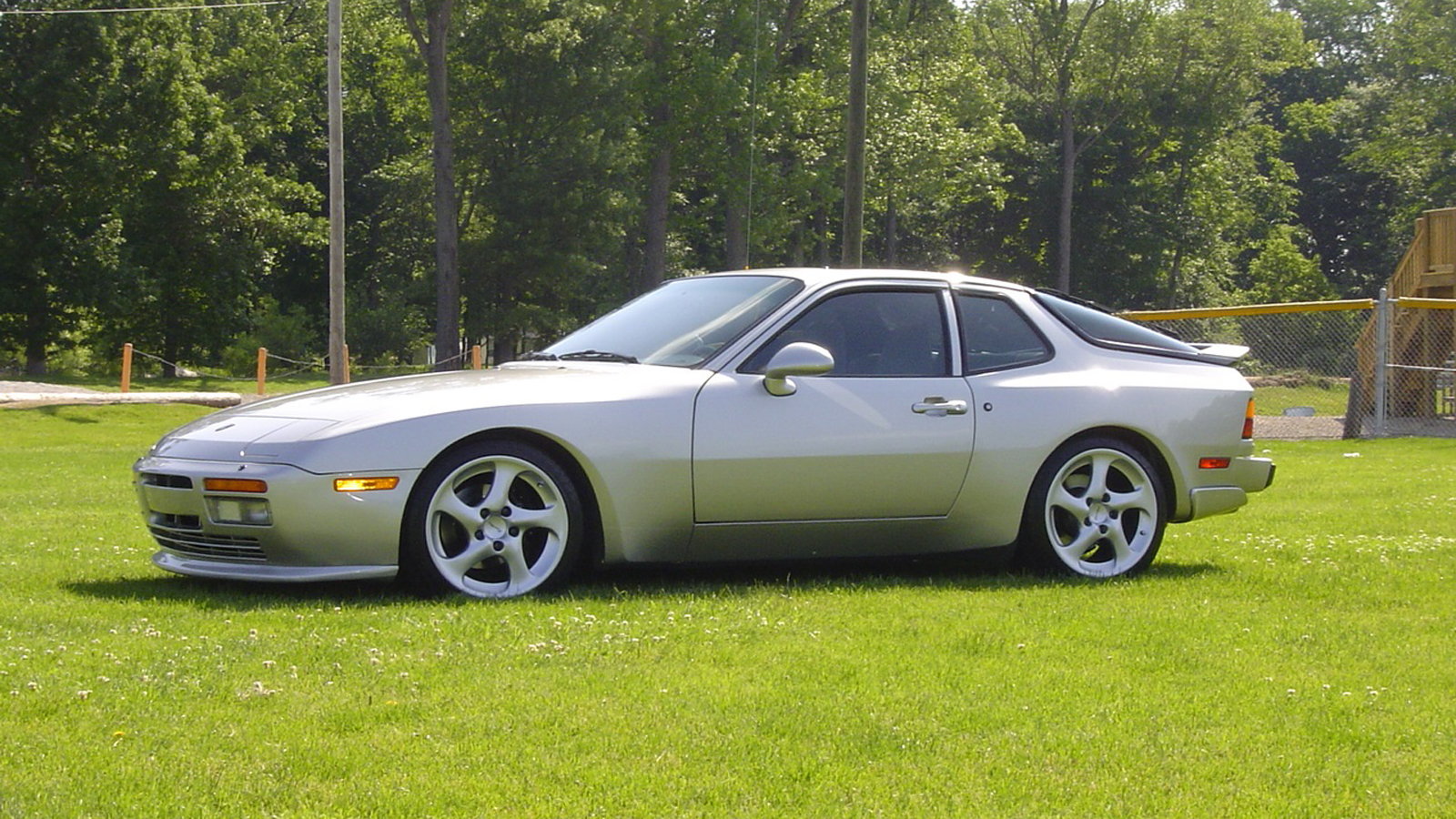6 Things to Know About Adapting Megasquirt/Microsquirt to a 944












1. Megasquirt vs. Microsquirt
By today's standards, the engines found in the 944 model range are much simpler than Porsche's modern offerings. With a simple ECU tune, we now see see cars gaining significant improvements in performance and driveability; however, 944 owners have not had the benefit of being able to fine tune the stock ECU. For years, the only electronic improvements or engine tuning that could be done to the 944 involved only a handful of performance chips installed into the Bosch Motronic DME. With aging wiring harnesses and bricked DME units popping up, owners were searching for a better alternative to keep their 944's on the road.
In early 2000, the Megasquirt standalone ECU was released, but because of a difficult user interface, did not gain widespread popularity. More refinements were made and the Megasquirt-I was released in 2001, with the updated Megasquirt-II released four years later. With continued development, a much smaller version of the Megasquirt-II was able to be stuffed into a small, sealed module, thus the creation of the Microsquirt. Nearly 10 years on, both the Megasquirt and Microsquirt ECU kits are still available in updated form.
The Megasquirt is the larger of the two units with its roots firmly in the DIY market where individuals can buy and assemble their own ECU to taste. On the other hand, the Microsquirt comes fully assembled, and while originally intended for smaller engines, has proven to work well on the 944. In either case, they perform similarly, but many feel the Microsquirt can be better hidden away in the stock DME location to retain an original appearance. For a comparison of the various Megasquirt ECU offerings, see Megasquirt's Comparison Chart.
2. Plug & Play?
With modern electronic equipment, individuals will often pay a premium for a component that will plug directly into their existing setup and immediately function correctly. Unfortunately, in the case of the 944 models, a plug & play kit is only available for the 944 S2 which plugs straight into its Bosch 55-pin connector without modification.
That said, any naturally aspirated 944 or 944 Turbo owner that is able to read a wiring diagram and has basic soldering skills can easily gut the stock DME and wire it into their Megasquirt unit. This will allow nearly all of the stock grounding points, various sensors, fuel injection and ignition power to remain intact. If your original DME unit is still functional, most suggest buying a second hand unit to cut into. This allows owners to revert back to their stock ECU if needed.
3. New Sensors
While the Mega/Microsquirt uses a number of factory inputs, there are several new sensors that will have to be adapted to the car for proper operation.
Manifold Absolute Pressure Sensor (MAP): The use of the stock airflow meter box is tossed aside when using the MS ECU, and a manifold absolute pressure sensor is installed in its place. A number of owners opt to use a standard 3-wire MAP sensor, found on various General Motors vehicles, and route a short vacuum line from the intake manifold into the sensor.
Wideband Oxygen Sensor: Unlike a narrow band O2 sensor that either measures a rich or lean condition, a wide band oxygen sensor is able to accurately measure the air-to-fuel ratio across the spectrum. The 944 Turbo should already be fitted with one of these, but it never hurts to install a new, updated unit to ensure accurate tuning.
Throttle Position Sensor (TPS): In order for the new ECU to read the exact position of the throttle opening, a potentiometer-based throttle position sensor must be used. Normally-aspirated 944's use a switch that only tells the DME when the throttle is completely open, or completely closed, so a 944 Turbo TPS must be sourced.
Intake Air Temperature Sensor (IAT): To most accurately measure the temperature of the air being ingested into the intake, a quick response intake air temp sensor needs to be installed nearest the throttle body opening as possible. As with the MAP sensor, a GM/Delphi unit is well suited for the job.
Crankshaft Timing Wheel (Reluctor wheel): Another set of components needed to accurately determine ignition timing are a reluctor wheel and a new variable reluctance-type sensor for accurately measuring the crankshaft position for ignition timing.
4. Hardware & Software
After the new ECU has been correctly wired in and all of the necessary sensors are in place, the ECU must be calibrated. To accomplish this, and all other future tuning for that matter, a laptop running at least Windows 7 and a USB to RS232 adapter cable are needed. Additionally, you will need to purchase EFI Studio's Tunerstudio MS software to be able to communicate with the ECU and setup engine parameters. Another important piece of software you are going to want on hand is the Megalogviewer software that allows instant viewing of all engine inputs monitored by the ECU. In short, you are basically going to have many of the tools on hand that a dyno shop would have, but without the actual dynamometer.
5. Tuning
With the software and hardware booted up and communicating with the ECU, you are now ready to program some basic parameters to allow the engine to run. Excluding the 944 S2 plug & play setup that includes a couple of basic starter maps, your car simply will not run without first completing this important step. There are a number of simple parameters that should be common knowledge such as engine displacement, number of cylinders, injector size, etc. The MAP sensor can be calibrated by simply showing the Tunerstudio software where fully opened and fully closed throttle positions are. The O2 sensor, IAT, coolant temperature, and injectors can all be set using the manufacturer's specifications. Another important step involves measuring where top dead center (TDC) is and its relation to your reluctor wheel, so the ECU can determine proper ignition timing. After all of the necessary data has been coded into the ECU, the car can be started and you can begin working on fuel mapping and ignition timing curves.
The tuning portion of installing a Megasquirt system is by far the most difficult step. That said, Tunerstudio provides numerous manuals that cover all that their software has to offer. Additionally, a wide number of repositories have been set up by 944 owners that provide step-by-step instructions on tuning the car with the Megasquirt ECU.
6. Pricing
So you've decided that a standalone ECU is just what the doctor ordered to put a little pep back in the step of your 944 model, but the looming question of how much this system actually costs still remains. Depending on which ECU unit you opt for, expect the price for the ECU alone to range from $300-500. Expect to pay an additional $250-400 for all additional sensors, spare DME, wiring, etc. Software and an interface cable will run around $100 to bring the grand total to approximately $1,000.
Several thrifty individuals have reported that they were able to successfully integrate the ECU and all the required components for $300 or less. Regardless of how you go about sourcing the parts, there is no arguing that the Mega/Microsquirt system is a sophisticated setup that will satisfy the needs of anyone looking for expanded tune-ability on the 944 platform.
For maintenance and repair guides, browse our technical How-to articles at http://rennlist.com/how-tos!
